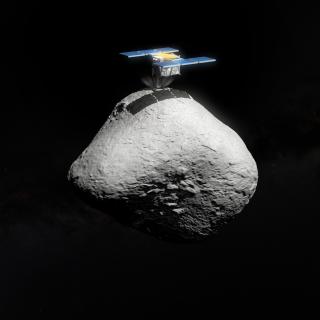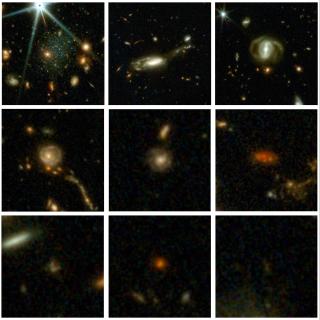Las primeras Jornadas de Puertas Abiertas en el Observatorio del Roque de los Muchachos (La Palma) correspondientes al año 2001, celebradas el pasado domingo, 15 de julio, y organizadas por el Instituto de Astrofísica de Canarias, atrajeron al Observatorio a 2.272 visitantes. Durante la jornada se pudieron visitar seis instalaciones distintas: el telescopio "William Herschel", el telescopio "Isaac Newton", el telescopio Nacional Galileo, el telescopio Nórdico Óptico, el telescopio "Mercator" y el experimento HEGRA. La organización contó con la colaboración de 48 personas, entre astrónomos de las distintas instituciones usuarias del Observatorio, personal propio de apoyo (administrativo, sanitario y de mantenimiento), además de diversas entidades como la agrupación de astrónomos aficionados "Isla de la Palma", AEA, Guardia Civil y Cruz Roja. Las visitas se realizaron en tres idiomas: español, inglés y alemán, y los 2.272 visitantes fueron divididos en 84 grupos distintos, cifras que superan considerablemente las de las jornadas celebradas el pasado año. La novedad en esta ocasión fue la posibilidad de visitar el telescopio "Mercator", el "benjamín" del Observatorio, que entró en funcionamiento el pasado mes de mayo. Se recuerda que las próximas Jornadas de Puertas Abiertas tendrán lugar el domingo 9 de septiembre.
Advertised on
It may interest you
-
 Astronomers have used telescopes around the world, includingthe Gran Telescopio Canarias (GTC or Grantecan) at the Roque de los Muchachos Observatory on La Palma, to study the asteroid 1998 KY26, revealing it to be almost three times smaller and spinning much faster than previously thought. The asteroid is the 2031 target for Japan’s Hayabusa2 extended mission. The new observations offer key information for the mission’s operations at the asteroid. “We found that the reality of the object is completely different from what it was previously described as,” says astronomer Toni Santana-Ros, aAdvertised on
Astronomers have used telescopes around the world, includingthe Gran Telescopio Canarias (GTC or Grantecan) at the Roque de los Muchachos Observatory on La Palma, to study the asteroid 1998 KY26, revealing it to be almost three times smaller and spinning much faster than previously thought. The asteroid is the 2031 target for Japan’s Hayabusa2 extended mission. The new observations offer key information for the mission’s operations at the asteroid. “We found that the reality of the object is completely different from what it was previously described as,” says astronomer Toni Santana-Ros, aAdvertised on -
 El programa de divulgación científica del Instituto de Astrofísica de Canarias (IAC) en La Radio Canaria, "Soñando Estrellas", emitirá su próximo episodio, este viernes, 28 de noviembre, a las 22:30 horas. El espacio, de 30 minutos de duración, está dirigido y presentado por Verónica Martín, jefa de la Unidad de Comunicación y Cultura Científica (UC3) del IAC. En este episodio la investigadora del IAC, Cristina Ramos Almeida, responderá a la pregunta de cómo nacen y crecen las galaxias y, especialmente, a cómo mueren. La investigadora, que recientemente recibió el Premio Mujer Tenías que SerAdvertised on
El programa de divulgación científica del Instituto de Astrofísica de Canarias (IAC) en La Radio Canaria, "Soñando Estrellas", emitirá su próximo episodio, este viernes, 28 de noviembre, a las 22:30 horas. El espacio, de 30 minutos de duración, está dirigido y presentado por Verónica Martín, jefa de la Unidad de Comunicación y Cultura Científica (UC3) del IAC. En este episodio la investigadora del IAC, Cristina Ramos Almeida, responderá a la pregunta de cómo nacen y crecen las galaxias y, especialmente, a cómo mueren. La investigadora, que recientemente recibió el Premio Mujer Tenías que SerAdvertised on -
 The largest observation program of the James Webb Space Telescope (JWST) has released its data: nearly 800,000 galaxies observed in unprecedented detail. COSMOS-Web thus offers the most extensive and deepest view of the universe ever obtained. In this data release, the Instituto de Astrofísica de Canarias (IAC) has played a key role, performing the morphological classification of more than half a million galaxies using neural networks, a crucial contribution to explore how galaxies form and evolve over cosmic time. COSMOS-Web was the largest General Observer program selected for Cycle 1 ofAdvertised on
The largest observation program of the James Webb Space Telescope (JWST) has released its data: nearly 800,000 galaxies observed in unprecedented detail. COSMOS-Web thus offers the most extensive and deepest view of the universe ever obtained. In this data release, the Instituto de Astrofísica de Canarias (IAC) has played a key role, performing the morphological classification of more than half a million galaxies using neural networks, a crucial contribution to explore how galaxies form and evolve over cosmic time. COSMOS-Web was the largest General Observer program selected for Cycle 1 ofAdvertised on